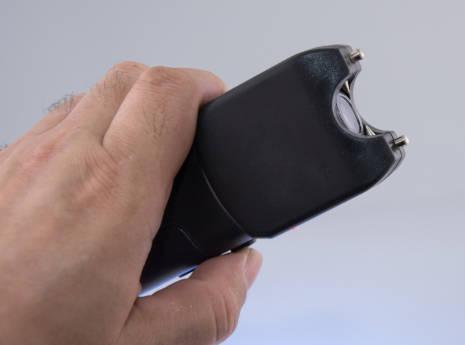Table of Contents
- Understanding the Legal Definition of Self-Defense in Stun Gun Use
- Key Situations Where Stun Gun Deployment Is Permissible
- State Laws and Regulations Governing Stun Gun Carry and Usage
- Practical Guidelines for Responsible and Legal Self-Defense with a Stun Gun
- To Wrap It Up
Understanding the Legal Definition of Self-Defense in Stun Gun Use
Determining when the use of a stun gun is legally justified hinges on a clear understanding of self-defense laws, which vary by jurisdiction but generally emphasize the principle of *reasonableness*. You must believe that applying force is necessary to prevent imminent harm to yourself or others. This means the threat must be immediate and unlawful, such as an attacker actively trying to cause bodily injury. Standing your ground or retreating before resorting to a stun gun often plays a critical role in how courts interpret the legitimacy of your actions. Remember, the force used should be proportional to the threat – deploying a stun gun against a non-violent situation can lead to serious legal consequences.
Key factors influencing the legality of stun gun use for self-defense include:
- Immediacy: The danger must be present and unavoidable.
- Proportionality: The response should not exceed the perceived threat.
- Reasonable Fear: A genuine belief that harm is imminent.
- Jurisdictional Laws: Compliance with local gun and self-defense statutes.
Understanding these criteria will help ensure that your self-defense measures remain within the bounds of the law, safeguarding you from potential criminal charges or civil liabilities when using a stun gun responsibly.
Key Situations Where Stun Gun Deployment Is Permissible
Understanding when it is appropriate to deploy a stun gun is crucial to ensuring your actions remain within the bounds of the law. Generally, use is justified in scenarios involving immediate threats to personal safety, such as when facing an unprovoked physical attack or an imminent assault that could cause serious harm. The force applied must always be proportional to the threat-you cannot escalate the situation with excessive or unnecessary deployment of the device.
Key examples where stun gun use is legally defensible often include situations like:
- Self-defense against an attacker who is armed or physically overpowering
- Protecting others from violence or physical harm
- Escaping a dangerous encounter where retreat is not possible
Remember: carrying and using a stun gun must comply with local laws, and its use should always be a last resort when no other safer options exist.
State Laws and Regulations Governing Stun Gun Carry and Usage
Understanding the legal landscape around stun gun possession and use is crucial to ensure responsible ownership. Laws vary widely across states, with some imposing strict regulations on carrying, while others may outright prohibit possession without a permit. For example, states like California require users to be at least 18 years old and restrict where stun guns can be carried, whereas states like Texas offer more leniency with fewer restrictions. Additionally, certain locales might mandate registration or background checks. It’s important to consult local statutes to determine whether you need a permit, if there are prohibited zones like schools, airports, or government buildings, and what documentation is required.
Some key legal considerations to keep in mind include:
- Age restrictions governing ownership and carry
- Prohibition of stun guns in certain public or private spaces
- Whether stun guns are classified as weapons under state law
- Regulations surrounding the transportation of stun guns across state lines
- Penalties for misuse or unlawful discharge of a stun gun
Failing to comply with these regulations can result in criminal charges or fines. Hence, staying informed about changing laws and seeking legal advice in ambiguous situations is advisable. Responsible use combined with knowledge of state-specific mandates helps ensure that a stun gun remains an effective and lawful tool for self-defense.
Practical Guidelines for Responsible and Legal Self-Defense with a Stun Gun
Understanding when it is appropriate to deploy a stun gun requires a thorough grasp of both the law and the ethical boundaries of self-defense. In general, the use of a stun gun is justified only when you are facing an imminent threat of serious harm, such as an aggressive physical attack that could lead to injury. It is critical that the response remains proportional to the threat; using a stun gun in situations where verbal de-escalation or retreat is possible may be viewed as excessive and potentially illegal. Before deciding to use a stun gun, make sure you are well-informed about the specific laws governing its use in your locality, as these can vary widely by state or country.
To ensure responsible and legal use, follow these practical guidelines:
- Carry your stun gun openly or concealed legally, according to local regulations.
- Use it strictly for self-defense purposes, when there is a clear and immediate threat to your safety.
- Avoid use against non-threatening individuals, as misuse can result in criminal charges.
- Document the incident immediately, noting what led to the use of force, and report it to authorities as required.
To Wrap It Up
In conclusion, understanding the legal boundaries surrounding stun gun use is crucial for responsible self-defense. While stun guns can offer a non-lethal means of protection, their legality varies widely by jurisdiction, and misuse can lead to serious legal consequences. Always take the time to research local laws, obtain any necessary permits, and use stun guns only in situations where you are legally justified to do so. By staying informed and acting within the law, you can ensure that your self-defense choices protect not only your safety but also your rights. Stay safe and stay legal!Check Our Other Blogs
- StunGun – Your Trusted Source for Stun Guns, Laws, and Self-Defense Tips
- PepperSprayLaws – Your Trusted Resource for Pepper Spray Information
- StunGunLaws – Your Trusted Guide to Stun Gun Legality and Safety





